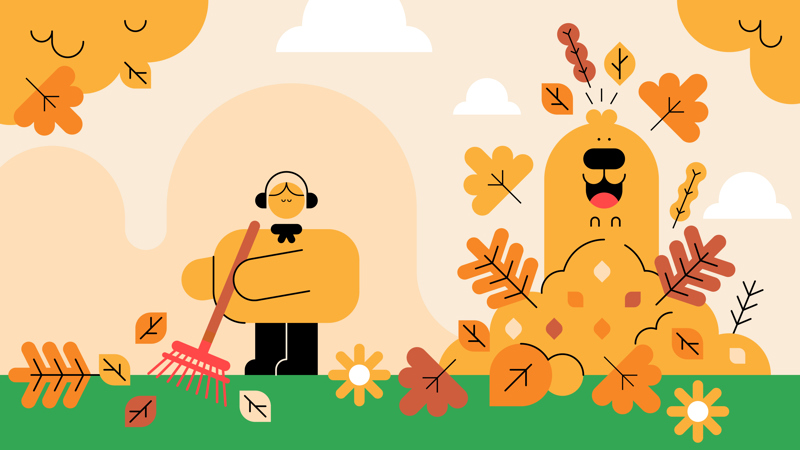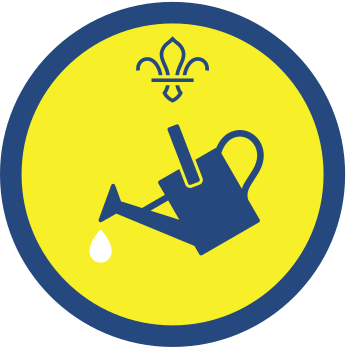
Choose the right tools for the job
You’ll need
- Gardening tools
- Copies of the tools information sheet
Before you begin
- Use the safety checklist to help you plan and risk assess your activity. Take a look at our guidance to help you carry out your risk assessment, including examples.
- Make sure all young people and adults involved in the activity know how to take part safely.
- Make sure you’ll have enough adult helpers. You may need some parents and carers to help if you’re short on helpers.
Planning and setting up this activity
- You’ll need a copy of the ‘Tool information’ sheet for each group.
- Gather a selection of tools, including a trowel, fork, and secateurs, as well as full sized equipment such as a fork, a space, a rake, a hoe, wellies, and a watering can. You may be able to borrow some from volunteers or ask parents and carers.
- Adults should be the only ones who handle sharp tools, such as the shears. Always make sure to handle them safely, use any safety locks or covers, and always having adult supervision. Tools should be stored safely and securely, out of the reach of young people, when not in use.
Guess the tools
- Gather everyone together and ask everyone why we use tools in gardening. Does anyone know what sort of tools there are and how they help us? Has anyone used any tools before?
- Ask everyone to get into two groups, and an adult should join each group.
- Give each group a selection of tools. They should place them on the table, or put them somewhere where people aren’t likely to stand on them or hurt themselves. You could even place and keep them inside a hula hoop to give them a boundary line.
- The adult with each group should ask everyone what they think each tool is called, what they think it’s used for, and how they use it safely. Everyone should try their best to guess. We’ve included a ‘Tool information’ sheet on this page to help with any explanations.
- Ask everyone how they think we could stay safe while using each of these tools. We’ve included some tips on this page.
- Each group should sit in a circle and pass around each of the tools, making sure to handle and pass them safely. An adult should show everyone how to close blades and make sure safety catches are firm, and remind everyone not to put any tools in their pockets.
- Make sure everyone knows the names of the tools before you move on.
- When everyone’s ready, someone should read the 'In the garden' story below. When the person reading reaches a question, everyone should try to answer using their new knowledge of gardening tools. People could also act out how the characters would use the tools too.
Anika, Ashley, and Aarav were friends. They loved to play after school, riding their bikes together if the weather was nice and playing games inside when it was raining.
One day, their teacher told them about an exciting new project. The school was going to turn a patch of land at the side of the playground into a beautiful garden for everyone to enjoy, and they needed people to help!
Anika, Ashley, and Aarav loved to be helpful so they decided to give it a go – even though they’d never done any gardening before. After school, they changed into some old clothes and met everyone on the playground. Loads of tools were resting against the fence, and their teacher was explaining what the first jobs were.
‘Anika’, she said. ‘Please could you dig over that patch? We want to turn it into a little flower bed’. Anika wasn’t sure which tool was best for the job, though knew she probably wasn’t the watering can (or the wellies!). Which tool should she use? Can anyone mime how to use the tool?
‘Ashley’, their teacher said. ‘Please could you start pulling up the weeds in that corner?’ Ashley headed straight over – they couldn’t wait to get started. When they got there, they realised they weren’t sure what to do. There were so many tools – would one of them be better than just using their hands? Can anyone remember which tool Ashley should use? How would they use it?
‘Aarav,’ their teacher smiled. ‘I know you’re really careful – please could you prune back those old flowers to stop them growing too big?’ Aarav was really pleased to be given such an important job, but he wasn’t sure which tool to use, and there were still loads left to choose from. What should Aarav use to prune the flowers? How should he use it?
Once everyone had finished their jobs, they put their tools back against the fence and looked around. ‘Wow,’ said Ashley. ‘It already looks so much nicer!’ While they’d been working hard, some of the other people in their class had put down compost and even planted some new bulbs.
After their break, everyone got back together to decide what to do next.
‘Do the new bulbs need to be watered?’ Aarav asked. ‘I’d like to water them’. This time, he was pretty sure which tool was right for the job. Do you know too? How should Aarav use the tool?
‘What about that pile of leaves?’ asked Anika. ‘Should I go and tidy it up?’ She had an idea of what tool would be the most help. What do you think she should use? How should she use it?
‘Are there any jobs left for me?’ Ashley asked.
‘Yes,’ said their teacher. ‘You could choose some more bulbs to plant in the little flower bed Anika prepared earlier.’ What tool should Ashley use to plant the new bulbs? What bulbs do you think they might choose?
Everyone gathered together at the end to take a photo of all their hard work so far.
‘Well done everyone,’ said their teacher. ‘You’ve all worked really hard, and our new garden already looks fantastic.’
We know that Anika, Aarav, and Ashley couldn’t have done it without your help, though. Well done!
- wearing sturdy footwear or safety shoes/boots with protective toecaps
- using a spade or hand trowel for digging instead of your fingers or hands.
- avoid loose fitting, baggy clothing that could become snagged
- wearing a dust mask when digging or potting
- putting on safety goggles or visors when cutting and trimming with secateurs, as branches or twigs may fly off when cut
- keeping your hand and wrist in a straight line when you use hand tools
- wearing earmuffs or earplugs when using noisy equipment
- following with the manufacturer’s instructions on proper use of the equipment
- always using safety guards or safety devices on equipment
- check your equipment regularly to make sure it’s in good working order
- storing equipment in a safe place when not in use, out of the reach of young people, and not leaving it out or on the ground
- rotating your gardening tasks and taking lots of breaks to avoid repetitive movements or strain
Reflection
This activity helped everyone to learn about the different tools that help people to solve everyday problems in their gardens, so it can bloom. Do people think they’d be able to choose the right tool for a gardening problem or task? Would they like to give gardening a go? Where could people do to garden, and what would they grow? Gardening is a great way to learn more about nature and spend time in the outdoors, and it can be a mood booster too!
Safety
All activities must be safely managed. You must complete a thorough risk assessment and take appropriate steps to reduce risk. Use the safety checklist to help you plan and risk assess your activity. Always get approval for the activity, and have suitable supervision and an InTouch process.
- Outdoor activities
You must have permission to use the location. Always check the weather forecast, and inform parents and carers of any change in venue.
- Gardening and nature
Everyone must wash their hands after the activity has finished. Wear gloves if needed. Explain how to safely use equipment and set clear boundaries so everyone knows what’s allowed.
- Sharp objects
Teach young people how to use sharp objects safely. Supervise them appropriately throughout. Store all sharp objects securely, out of the reach of young people.
- To make this activity harder, you could add in any more unusual tools, such as about a bulb planter, loppers, edging tool, or shears.
Make it accessible
All Scout activities should be inclusive and accessible.
If you enjoyed this activity, why not take it one step further and plan a community gardening project to give everyone the chance to try some of the tools while supervised?
Any young people who may know about or like gardening could share with other people what they know about the tools.
